The Spherical Propagation/ Varying Speed(s) of Light
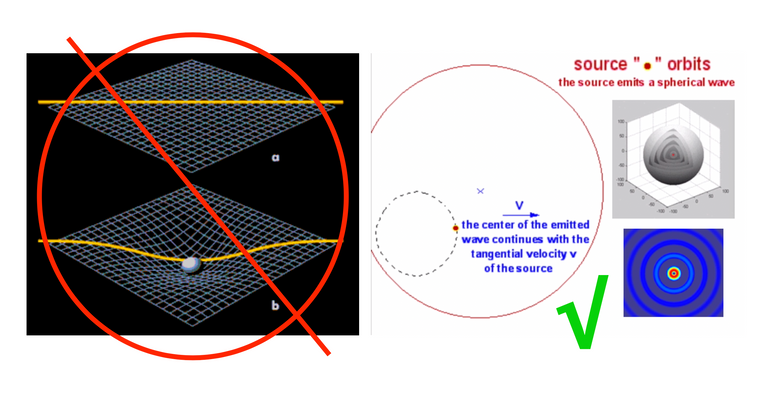
Propagation of light:
"If the velocity of light is only a tiny bit dependent on the velocity of the light source, then my whole theory of Relativity and Gravitation is false." -- {Quotation of Albert Einstein from a letter to Erwin Finley-Freundlich: August 1913}
Well... turns out.. the speed of light IS dependent upon the speed of the light source.
Every emission of light is a spherical burst. The sphere is expanding at the rate of c.
But that sphere has a center point. And that center point propagates at the speed tangential to the velocity of the spinning and/or traveling source/ emitter. (The center point travels however fast it was flung off/ left behind from whatever it came from.)
The center of that sphere propagates on a rectilinear/straight lined path. Being flung/ ejected/ left behind from its source.
Like jumping off a moving train. You are still traveling with the same momentum and velocity.
But at the same time… The sphere is expanding at the rate of c.
The center of the sphere is continuing to travel with the same velocity as the source it left (v) and at the same time it is expanding at c. (Therefore, c+v)
Imagine a wet ball being spun in microgravity. The droplets will be flung off/ left behind in a rectilinear/ straight path from the ball (the source). But imagine there is an expanding sphere around that ejected droplet. Don’t be fooled by the collection of droplets forming a total curve. Pay attention to each individual droplet traveling a straight lined path unto itself.
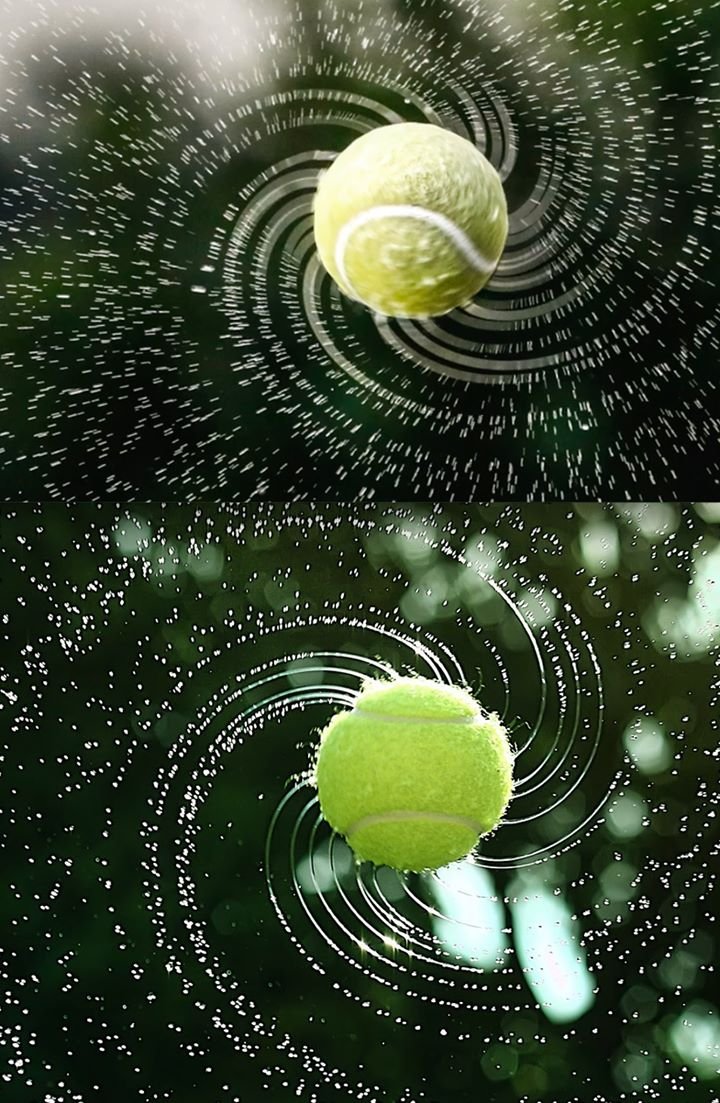
The center of that droplet/sphere is traveling at a tangent relative to the object it came from (traveling a straight lined path at the speed/ velocity of v).
But the sphere is also expanding at the rate of c. And the moment that wavefront or any part of that expanding sphere meets interference or resistance… That part of the wavefront ceases to exist. Gets absorbed. Extinct.
And then a brand new secondary droplet (photon) is ejected from that point... with a new sphere expanding from That point.
ANYtime that rectilinear/ straight lined path is broken/ the boundary of the expanding sphere is interfered with… a new emission is generated from that point of interference. Traveling relative with that interference. The Re-emission c’ does NOT travel the same speed as the original expanding sphere c.
Therefore, c’ ≠ c
If the boundary of that sphere or wavefront meets ANY resistance or interference…
(cosmic dust, radiation, plasma, anything) ... It ceases to exist at the point of interference... and a brand new emission bursts spherically outward from that point traveling relative with that interference. (Which could be traveling at a different speed and direction.)
And every re-emission is a spherical burst propagating c relative to its center of emission.
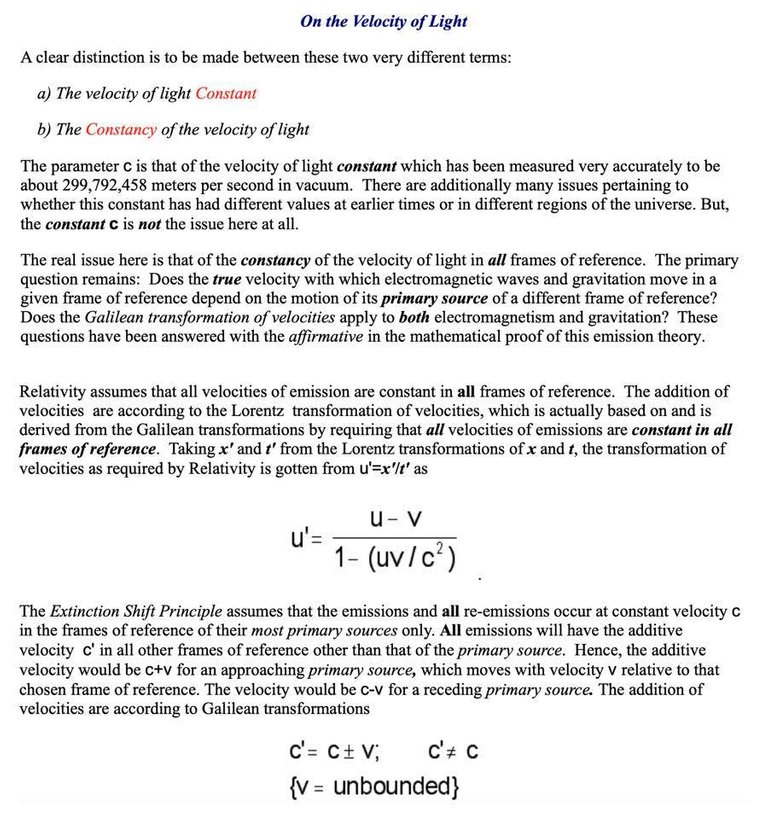
Which means the concept of light traveling forever is invalid. Or that the same light from a distant galaxy is the actual light we see after it is Re-Emitted through the vast amount of interference on the way to our eyes or satellites. The same light does not just bounce around over and over or deflect and bend around stars, etc. Doesn’t happen.
Photons do not ricochet.
So, relative to the source... The center of the photon sphere is propagating away at whatever speed it was flung off/ ejected/ left behind. Different in every scenario.
(And Definitely Not “the same from all frames of reference”!)
The spherical wavefront that is expanding from that center point is propagating at c.
So it will APPEAR to ALL OBSERVERS that light travels at c.
Because ANY observer in the universe will witness light being emitted relative to them. From the closest interference.
That sphere will propagate outward at c no matter what.
Because your eye itself is a point of interference and re-emission.
Which means you will always observe the ILLUSION of c from all frames of reference.
Light is a spherical burst.
You can call the center of that emission/ burst/ sphere a photon... you can call anywhere within or at the boundary of the sphere “photons”. Thus the farthest point of the boundary/ of that expanding spherical wavefront is traveling c + v relative to the source of the emission. But the other half of that wave front on the other side of the sphere is expanding towards the source that it was emitted from.
So the total photon sphere would be (c +/- v) dependent upon where a given observer is in relation to a source of emission.
Any given source of light is most likely not traveling or spinning a significant fraction of the velocity of light itself.
(relative to any given observer)
Don’t have to waste your time with nonsensical hypotheticals of distorting space and time.
Good for Hollywood... not so much as it applies to reality.
A particle cannot travel faster than the light From Its Own Source!
If a particle is ejected or shed from an atom or matter… And a photon is emitted from that same matter at the same time in the same direction… Then the speed of the particle could not catch up with the expanding spherical wavefront of its own source. A candle could not catch up to the boundary of the expanding spherical wavefront it itself is emitting.
An observer cannot catch up to the light emitted from himself, or any source traveling relative.
ONLY in that respect is Einstein's perspective valid in regards to a speed limit but in proportion to its Own source.
The entire model of light from Einstein is erroneous and incorrect.
The Newtonian model of light and prisms as portrayed in textbooks is erroneous (or at least is only a fraction of the complete model.)
The image popularized by Pink Floyd’s Darkside of the Moon album is erroneous as well.
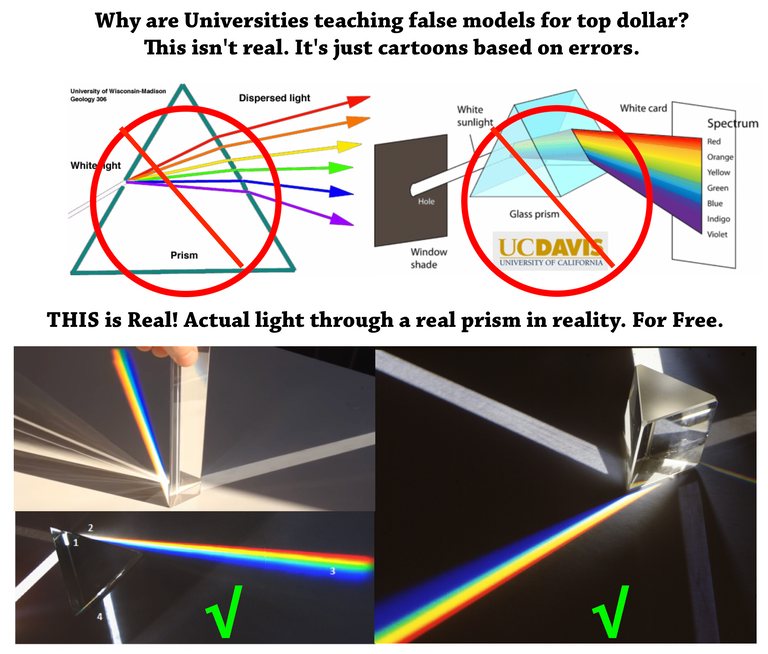
Clay Taylor Color Theory:
https://www.artofclaytaylor.com/single-post/2016/08/22/The-Magnetic-Spectrum-of-Inertial-Polarization
I would like to see someone place a prism in a furnace until it's red hot. And then place the red hot glowing prism in a beam of sunlight and watch the refractive index change on the wall as the prism cools to room temperature.
Until the colors "split" and make the "rainbow" on the wall".
But at what specific temperature would the colors manifest? Which colors might show up first?
Or would they all appear equally?
So... when someone says things like "approach the speed of light" or "travel faster than light" ... the light from what particular source?!
If you are in space and a flashlight is moving relative with you... The spherical burst of light emitted from that object is propagating outward at c. (relative to YOU) (meaning that expanding sphere propagating out from the surface of the lens of the flashlight... that wavefront/ shell of light hit you)
If you are in space and a flashlight is moving toward you at 100 miles a second... then the spherical burst of light emitted from That particular object is moving c + 100 m/s (c+v) (relative to YOU)
If you are in space and a flashlight is moving away from you at 100 miles a second... then the spherical burst of light emitted from That particular object is moving c - 100 m/s (c-v) (relative to YOU)
The illusion is that when light from ANY given source meets ANY resistance whatsoever... that light ceases to exist at that point of interference. And a brand new photon and spherical emission is generated from that new point. Traveling relative with that interference.
So if the interference is traveling a different speed than the original source... you will not know that the re-emission from that point is a different speed than the original emission.
I don't believe in the concept of reflection anymore. Only absorption and re-emission so quickly that there is an illusion of the same light bouncing back.
When you look in a mirror, the light hits the glass, is absorbed by the glass… And a brand new light is re-emitted from the surface of the glass, making it appear that the same light "reflected."
An emission/ re-emission of light is an expanding sphere. But that sphere has a center. And that center is traveling in a rectilinear path as it expands away from its source.
We are enveloped within the interference produced by our own Sun, therefore, the light from ANY given source in the universe will APPEAR to travel c.
Since the re-emission of light is Not the same speed as the light emitted from the original source.
c' ≠ c
So when people say "travel faster than light"... travel faster than WHAT Light?!
From which specific source traveling which direction?
So again... If you are in space and a flashlight is moving toward you at 100 miles a second... then the light emitted from That particular object is moving c + 100 m/s (c+v)
BUT.... by the time that undisturbed wave reaches ANY observer... it will encounter resistance, therefore, the observer will see a RE-EMISSION which travels c.
Giving the ILLUSION that light is the same from all frames of reference.
It's not.

Textbooks sometimes show a gun and physical bullet to describe the ejection of a photon. Like "Dr. Quantum" from Flatland or What the Bleep.
But a physical bullet and gun is not an analogy for a photon ejected from matter.
Cannot equate the two.
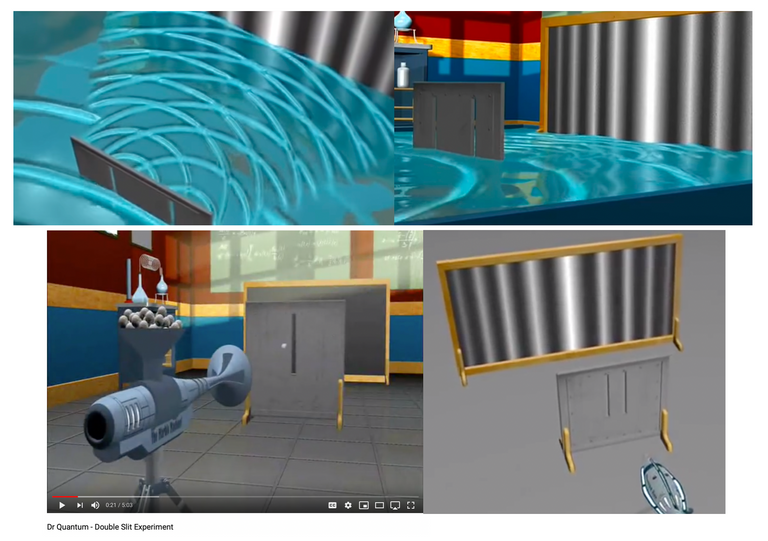
A bullet does not spherically expand.
Nor does a photon being ejected move that matter in the equal and opposite direction.
A laser pointer does not shoot in the opposite direction as the beam with an equal and opposite amount of joules powering the beam. A laser pointer is not a thruster.
Same with a flashlight. A flashlight doesn't shoot in the opposite direction as the beam it projects with an equal and opposite amount of joules/ newtons. A flashlight is not a thruster.
Light doesn't work that way.
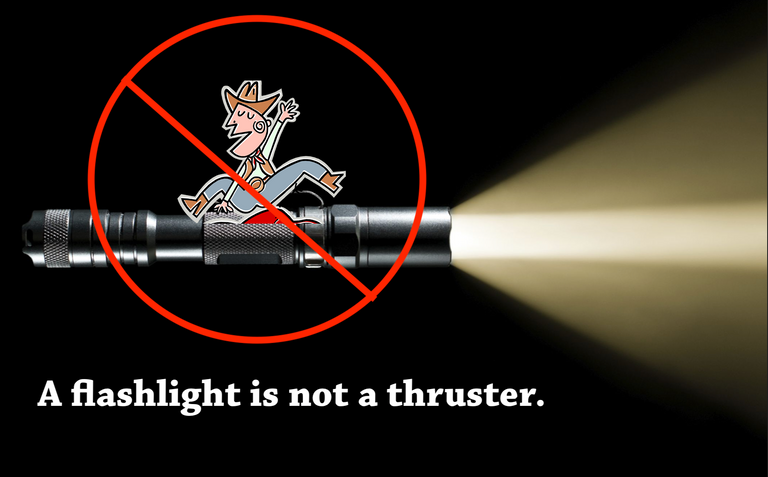
Any bullet/ particle analogy for a photon is ultimately nonsensical and erroneous.
Go through these short pages from Dr Edward Dowdye's website.
Click "Next Page" at the bottom until you are through with the 6 pages:
http://www.extinctionshift.com/details02.htm
Attach a gun to a rigid platform. And let’s pretend there is no recoil in the gun, yet its shooting a bullet in microgravity.
But the gun and entire rigid platform is spinning on its axis as it fires. (Entire platform spinning like a basketball on your finger)
The velocity of the bullet will shoot outward in a rectilinear/ straight lined path from the source (gun). And the speed of the bullet relative to the gun will be at a tangent to the spinning platform.
The bullet will want to shoot out from centrifugal force, not because it is propelled with gunpowder. Therefore, the bullet will not induce an equal and opposite linear reaction causing recoil or kickback.
Only in that respect is a gun/bullet analogy apropos. Regarding the path of an ejection.
Light can only be emitted at a tangent to something spinning or in motion.
Even a “stationary lightbulb” has a moving current flowing through the coil of wire. The energy constantly corkscrewing at a tangent. Flinging off “photons” (which are apparently massless according to Dr. Edward Dowdye.. still have to grasp the concept of masslessness)
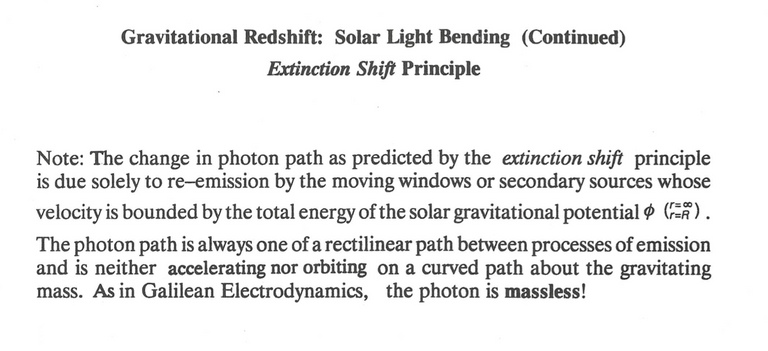
The photon emitted from a flashlight is a spherical burst at the point of the bulb.
If the flashlight is stationary, then the center of that sphere will remain at the point of the bulb.
But if the flashlight is spinning or traveling a particular direction... the center of that expanding spherical emission will be traveling away/ left behind from the flashlight at whatever speed it was ejected. (at a tangent relative to an observer traveling with the flashlight)
The sphere is expanding at c in addition to the center of the sphere traveling in a rectilinear path relative to its source of emission.
There is no such thing as empty space… (Casimir effect did away with that nonsense decades ago, as did Dirac in some respects) There is a refractive index through plasma which pervades the 98% of space attributed to nonsensical dark matter. (dependent upon the type of ionized gases/ medium.)
Empty space would suggest absolute zero. But even in the depths of space it is at least 4 Kelvin. There can be no refractive index if there is no medium to refract through.
Thus newtons law stating "anything in a state of uniform motion will remain in uniform motion until acted upon by an outside force."
Empty space could have have no physical influence or action.
Space does not curve or distort. That is a logical fallacy called Reification. Trying to make an abstract idea into something concrete and physical with rules. Might as well anthropomorphize space too then.
Space has no properties (as Nikola Tesla stated as well as many other recognized giants).
That would be just as crazy as claiming “gravitational lensing” in the visible light spectrum above a celestial body. Never been observed in the history of Astrophysics.
Light cannot curve.
Anytime the rectilinear path of an emission/ re-emission of light is broken… A brand new light is created from that new point. emitted from the interference itself. If there is a beam of light in a curve, then you are seeing a collection of re-emissions at tangents that seem like it's the same light bent into a curve. None of the light within a curve is the same light.
Or you are seeing a camera artifact, glare, forward light scatter, etc.
Only through certain equipment in isolated wavelengths and spectra.
Not with the naked eye in reality.

Imagine playing mini golf.
But every time the golf ball hits something, it disappears. But instantaneously, a new golf ball appears right in the same spot.
When you putt the golf ball it goes in a straight line. But as soon as it hits a wall.... The wall absorbs it.. and a brand new golf ball is emitted from the wall.
Making it seem like the same ball is bouncing around.
Every time the ball breaks it's straight path, a brand new ball takes its place.
The ball in this case represents the center of an expanding sphere which is an emission of light.
Mainstream science and the big bang model says that the same light has existed since the beginning and is just bouncing around over and over and never losing energy. Travels forever they say...
So when you see a reflection of yourself in the mirror… That is not the same light.
Light is not bouncing and reflecting off of the glass. The glass is absorbing the light and then a brand new light is being re-emitted from the glass. Happening so fast that it seems like the same light is bouncing back.
Now imagine a game of pong. Where a ball is bouncing off of a moving wall.
The ball is absorbed by the moving wall and will then be traveling the same speed as the moving wall when it is re-emitted. but depending on the speed of the moving wall, it's re-emitted at a slightly different color.
And again, imagine an expanding sphere emanating from the point of that ball.
Ball is traveling relative to the wall it was re-emitted from.... in addition to the spherical burst propagating at c from the center point of that reemitted ball.
So the centerpoint of that spherical wave front is traveling away from the wall... yet traveling relative with the moving wall. Like if you jumped off a train. You are moving relative with the train. Jump on to another train... you are now traveling relative with that train. Each time you jump off you are at a new speed.
Corrections regarding the the Invariance Equation and propagation of Light by Dr. Edward Dowdye Jr.
Real Math and Physics:
http://www.extinctionshift.com/short_present/ViewGraph_English.pdf
What would the double slit experiment look like if the wall was concave like a parabolic dish?
And then changed how concave or convex the wall was. What would the patterns look like?
And what would it look like inside of ALL of the interior walls of a cube or inside of a sphere or inside of a tetrahedron, etc.
There is not some particle/wave duality and when you look... it changes reality...
None of that is real. We only get to see the double slit experiment on one flat wall. And they treat light as a flat rippling wave like at the meniscus of water. But they aren't aware of the RE-emissions taking place at the walls of the slits themselves.
Treat the double slit like an expanding sphere, and the center of the sphere is hitting the wall while the ripples are the cross section of the expanding sphere. Keep watching the walls/ boundary of the sphere hit the ceiling and even back towards the source of the emitter. Each slit has 2 sides. And each side is a point of re-emission. Which then intersect to make a total interference pattern. Not mysterious. No paradox. Not dependent upon where you look.
Don’t just pay attention to the cross section of the expanding spheres at the meniscus.’
See 2D, Think 3D... then add spin.



Which brings us to a test I thought up.
Rotating Double Slit Experiments.
The double slit experiment might be more interesting if the “photon gun”/ emitter was traveling towards the wall or away from the wall at different speeds and angles. While orbiting and spinning at different rates.
And instead of the emitter pointing straight at the wall. Spin it like a lighthouse on its axs at the center of a round pool.
That might be closer to a more accurate representation of how light propagates from a spinning source in space. So that each emission from the photon gun at any point of its surface is coming out at a tangent to the spinning emitter itself.
That way you get the same interference pattern over the course of time in 360° rather than all at once on one flat wall.
So you have a ring but a slits cut in part of the ring. And that Ring is moving towards or away from the wall while spinning. So that the emissions are coming out of that moving window at a tangent relative to the walls situated around the 360° pool. First example is a visualization of a stationary circular double slit experiment.
Pardon the embarrassingly crude/ hasty drawing on a whiteboard:
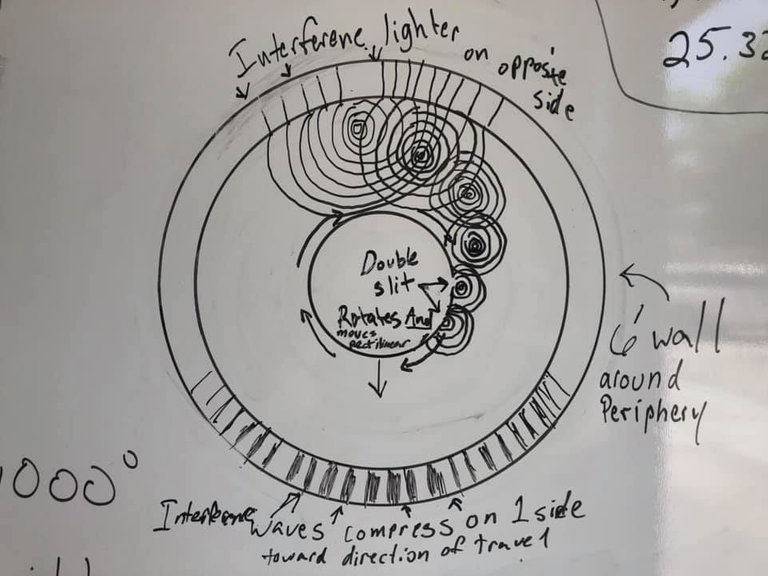
The following 3 images would be if the flashlight rotated just One Time. Pulsing 1 flash of light past the double slit.
Just trying to give you a visual at this point.
I really need help making CGI renderings of these scenarios.
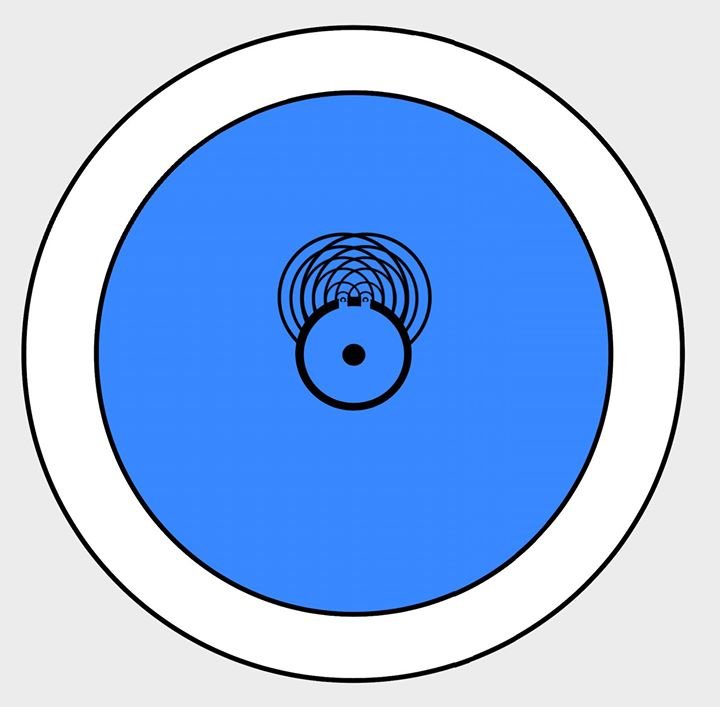
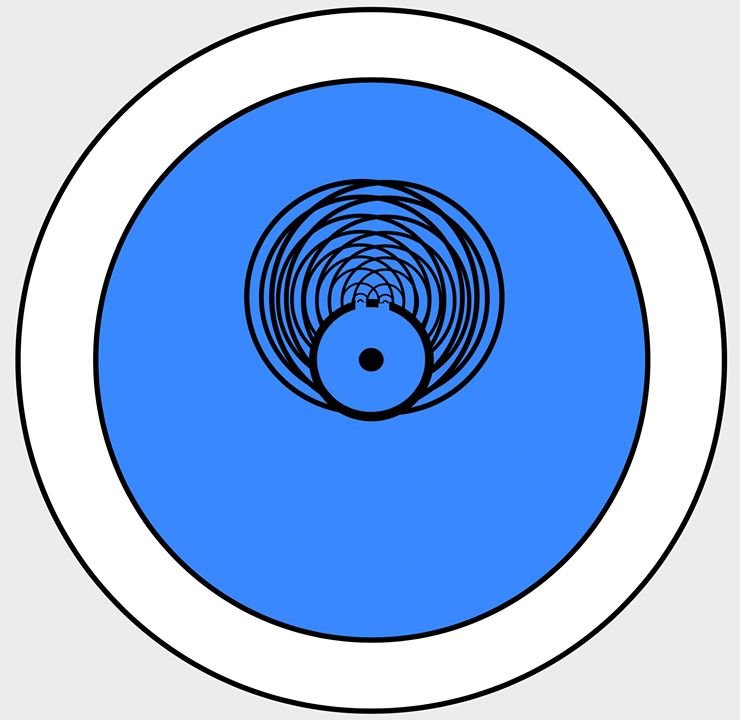
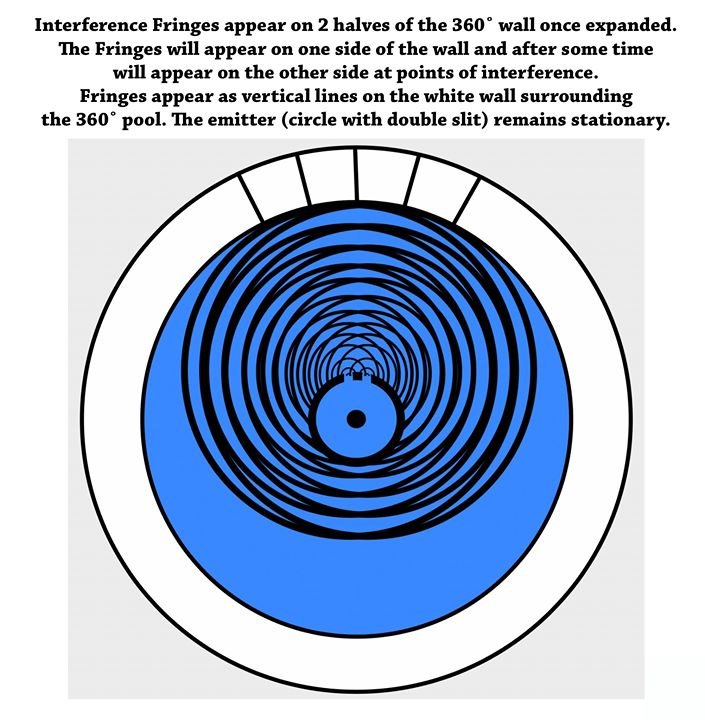
I can think of at least 10 other different double slit scenarios off the top of my head.
But it’s going to take me a while to make diagrams of each scenario.
Rather than a flat wall with 2 slots in a rectangular pool, there is a ring with 2 slots in a 360˚ round pool.
The Ring with two slits is rotating on its axis like a basketball on your finger. Spinning in place so that the double slit windows are making an orbit around a stationary focal point. Making interference fringes 360˚ around the curved wall. There will be even fringes around the wall at a given rotation rate, but it will take time for them to form. You will get a different pattern depending on how fast your rotate the double slit windows. The flashlight is stationary pointing at 12 o clock.
The fringes will take time to form in all scenarios. Not appear all at once like the standard flat wall like everyone knows.The Ring is orbiting but not spinning while it emits waves that will hit a range of degrees dependent upon how large the orbit is. But will not make interference fringes 360˚around.
The Ring is spinning and orbiting like a planetary gear. Adjusting the spin to orbit ratio will determine the fringe patterns 360˚ around the curved wall.
The Ring is spinning on its axis while the pivot point is moving in a straight lined path towards a part of the curved wall. Like a hurricane moving. Spinning and moving in a straight path. There will be fringes around the 360˚ wall but half the wall will have darker fringes than the other half.
The Ring is orbiting while the pivot point is moving in a straight line towards the wall. There will be a sweeping scatter of light and dark fringes around the 360˚ wall.
The Ring is spinning on its axis, orbiting AND the center point of orbit is moving in a straight lined path towards part of the curved wall. There will be fringes around the 360˚ wall. But there will be points of dark and light fringes scattered.
One side of the wall will have a darker bias than the other even though there are scattered various shades as well.The ring is spinning on its axis, orbiting AND the center point of orbit is in an orbit as well.
There will be sweeping scattered fringes around the 360˚ wall.The Ring is spinning, orbiting AND the center point is making corkscrews toward a particular direction.
The ring is spinning and the center focal point is making corkscrews toward a direction.
The ring is orbiting and the focal point is making corkscrews toward a direction.
There will be sweeping and scattered fringes around the 360˚ wall. Getting darker sweeps toward the direction of travel toward the wall.
(All 10 Examples are with a Stationary flashlight/ emitter pointing at 12 o’Clock)
The scenarios can double to 20 if you spin the flashlight clockwise at a constant rate.
And then triple to 30 scenarios if you spin the flashlight counter-clockwise at a constant rate.
And then increasing the rates at a constant or in sweeps.
And then adjusting the size of the slits during operation at different rates and angles will drastically increase the amount of scenarios from there.
Again, it would be nice to see these with graphics that do it justice.